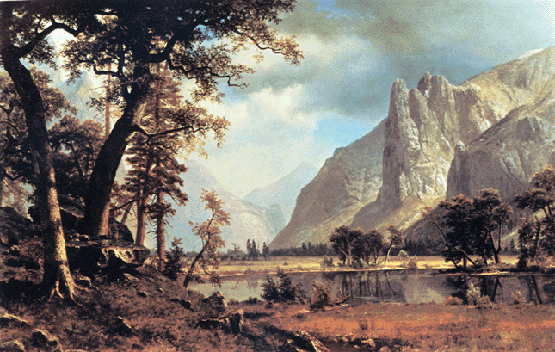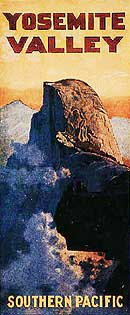| |

Front
Page
Activities
Administration
The
Ahwahnee
Artist
Palettes
Human History
EcoImpact
Indian
Legends
Natural
History
Master
Plan
Media & Bookstore
Museum
The
Naturalist
Park & Local
Cams
Pioneer
Cemetery
Road
Conditions
Search
Site
Reader's
Mail
Vistas & Views
Weather
Conditions
Yosemite
Guide
Advertise With Us
Masthead

Top
Stories
Yosemite Park
National Parks
Conservation
Sierra Nevada
Sierra Club
Forestry
Park Service

Bulldog News
California Star
Clovis Free Press
Daily Republican
Fresno Republican
Mother Wired
Reagan Library
SierraPortal.com
Tower District News
ValleyPress.com
WebPortal.com

Yosemite Bookstore
Ahwahnee
Hotel
Auto House of Clovis
Aluisi
Real Estate
Cerro Negro Music
Clovis Planetarium
Irene's Cafe Dining
Your Fresno Broker
FresnoIncomeProperties
Fresno Investment
RE
Majestic Pawn
Onomuse Productions
PC Paramedics
Presentations
Inc.
Roger
Rocka's
The 2nd Space
Tower 2000 Jukebox
Conserve Wetlands
|
|
 |
|
[an error occurred while processing this directive]

|
Friday,
February 1, 2002
Indian Country
Free Land For The Taking!
By Yosemite News Staff Writers

YOSEMITE
VALLEY -- Two hundred years ago today, the United States, British
Canada, Oregon Country, Mexico, the Texas Republic—all encircled
a vast and mysterious land, the subject of much speculation
and not much careful thought.
Call it Indian Territory for now, for
it contained survivors of the displaced, decimated eastern tribes
and the great unmolested, unsuspecting Ahwahneeche Miwok people
of Yosemite Valley, and the the great Nation of the Plains Indians.
As limitations to American growth,
man's treaties had already proved to be the expedient instruments
that they were intended to be by the enforcing party.
But nature, the other great limitation,
was not as malleable to national destiny, or so at least it
seemed in 1844 as America stood on the astern bank of the Missouri
River and looked across to a hallucination known Thomas Jefferson,
who knew much, was ignorant about most of the territory he purchased
unseen in 1803 at a bargain-basement price.
The few settlements of the Louisiana
Territory, he reported to Congress, "were separated from each
other by immense and trackless deserts." Three years after this
hearsay, William Clark and Meriwether Lewis returned from their
examination of the country; they had found the plains to be
simply dry and barren, though not desertlike.
In that year, however, young Lieutenant
Zeb Pike traveled the Far West and returned with the most fanciful
impressions. "This area in time might become as celebrated as
the African deserts," he wrote of the territory sitting between
the meridian of the great bend of the Missouri and the Rockies.
"In various places [there were] tracts
of many leagues, where the wind had thrown up the sand in all
the fanciful forms of the ocean's rolling wave, and on which
not a spear of vegetable matter existed." Pike's visions of
sand dunes, pathless wastes, and sterile soils were reported,
widely read, and faithfully believed by geographers.
The myth became innocently embellished
by subsequent visitors, especially those in the party of Major
Stephen H. Long, who traversed the whole area in 1820. It was
reported to be "an unfit residence for any but a nomad population
... forever [to] remain the unmolested haunt of the native hunter,
the bison, and the jackall."
Twenty-four years later the Santa Fe
trader Josiah Gregg issued his Commerce on the Prairies, a book
based on extensive experience on the plains. "These steppes,"
he wrote, "seem only fitted for the haunts of the mustang, the
buffalo, the antelope, and their migratory lord, the Prairie
Indian."
Soon young Francis Parkman would see
sand dunes along the Platte River, in his imagination extending
this "bare, trackless waste" for hundreds of miles. Thus the
future states of Kansas, Nebraska, Oklahoma, the Dakotas, Montana,
Wyoming, and Colorado existed in the American minds of 1844
in hopelessness and sterility—fitting continental leavings for
the aborigines.
Little as the Great American Desert
interested politicians and pioneers alike, temptations lay on
its western and southern frontiers. As Asa Whitney composed
his Pacific railroad memorial in the closing months of 1844,
the upstate New York countryside rumbled with political activity,
as was true all over the nation, with much attention being paid
to the issue of expansion.
Six months earlier in Baltimore the
convened national Democratic Party plodded through seven deadlocked
ballots before finally rejecting its obvious choice, Martin
Van Buren. As former senator, governor, secretary of state,
vice president, and president, Van Buren had, by 1844, served
his country perhaps too well, but his failure this time around
had less to do with his shopworn self than with his disinclination
to invite war by annexing new territory—a position that was
then at distinct variance with prevailing sentiments.
Two canvasses later the Democrats acclaimed
a dark horse, James Knox Polk. He had twice failed to be re-elected
governor of Tennessee, but when he appeared in Baltimore, his
proprietary urges toward hitherto disputed lands plainly in
sight, Polk prevailed. In the ensuing presidential contest the
opposing Whig party could muster little more than the slogan
"Who is James K. Polk?" for their own candidate, Henry Clay,
who was otherwise silent on the great issue of the day.
That issue lay at the heart of the
Democratic platform, but more important, it had already been
accepted as a fait accompli by most Americans: the annexation
of those title-clouded expanses known as Texas and Oregon—Mexico
and England be damned. Exactly a decade had passed since our
neighbor to the south had reopened its Texas lands to American
immigration after some years of nervous border restriction.
Likewise, it had been ten years since
the first Methodist missionaries had drifted to the bank of
the Willamette River in Oregon Country, seeking Flatheads with
a hankering for the Good Book (there were none). The latter
territory had an agreeable climate and an excess of lush farmlands,
and though it was jointly occupied with Britain there were relatively
few British. Oregon's emptiness beckoned.
So did the equally virginal lands of
Texas. By 1836, the number of American settlers in Texas had
grown to nearly thirty thousand—ten times the resident Mexican
population and more than enough to enforce a nascent Republic
of Texas only weeks after the tragedies at the Alamo and at
Goliad. President Andrew Jackson, in formally recognizing Texas
sovereignty in March 1837, had less influence on encouraging
further settlement than did the other great event of that season,
which overshadowed it. The Panic of 1837 sent thousands of bankrupt
and debt-ridden farmers of the Mississippi River valley flooding
into Texas to join those who had preceded them.
Others, their hopes dashed no less
by the deepening depression, began to weigh the odds of the
longer, more hazardous route to Oregon, across the Great American
Desert. By 1839 some five hundred Americans had sunk their plow
blades in the Willamette bottomland and a new destination had
entered the dreams of would-be migrants: Mexican California.
Texas fever! Oregon fever! California
fever! Rare was the American newspaper or magazine that did
not carry a rhapsodic letter from a newly arrived settler in
those and subsequent years. Farmers seemed to be spending as
much time urging their fellow Americans to join them in paradise
as they did in raising crops—that is, when they were not deluging
Washington with petitions urging annexation. If for many the
lure of a new purchase on life was balanced by the numerous
threats to life during the overland journey, news from those
who had survived the ordeal was persuasive.
Especially so were reports of the Bidwell-Bartleson
party, which in the summer of 1841 followed the West's lure
from Missouri, eventually splitting into two groups which attained
Oregon and California after much hardship.
Then, in 1843, young Lieutenant John
Charles Frémont issued a report on his army exploration of the
Oregon Trail from the Mississippi River through the South Pass
and into the Wind River range of the Rockies. Published obligingly
by the government, the path-follower's book was an instant success,
with its descriptions and maps both a Bible and a Baedeker for
thousands of potential imigrants.
And when the Democrats rallied behind
James Knox Polk, with Texas and Oregon (and—who knows—California)
at the forefront of their minds, the expansionist party prevailed,
albeit narrowly, in the electoral college. Those faraway settlements
seemed at once closer and more alluring.
Meanwhile, an obscure merchant, recently
returned from China, signed his name to a document which was
handed to an upstate New York legislator, the Honorable Zadock
Pratt of Prattsville, who packed it away for his trip to Washington
and the second session of the Twenty-eighth Congress.
The iron horse would soon be
on its way.
[Editor's
Note: For completion of this story, the writers consulted the
works of David Haward Bain titled
Empire Express Building the First Trans - continental Railroad
(1999), published by Viking
Penguin Group.]
Letter
to the Editor

|

[an error occurred while processing this directive]

|
|
 |
|
| Nature Notes |
"Climb
the mountains and get their good tidings. Nature's peace will flow
into you as sunshine flows into trees. The winds will blow their own
freshness into you, and the storms their energy, while cares will
drop off like autumn leaves."
-- John Muir, 1901 |

|
|







